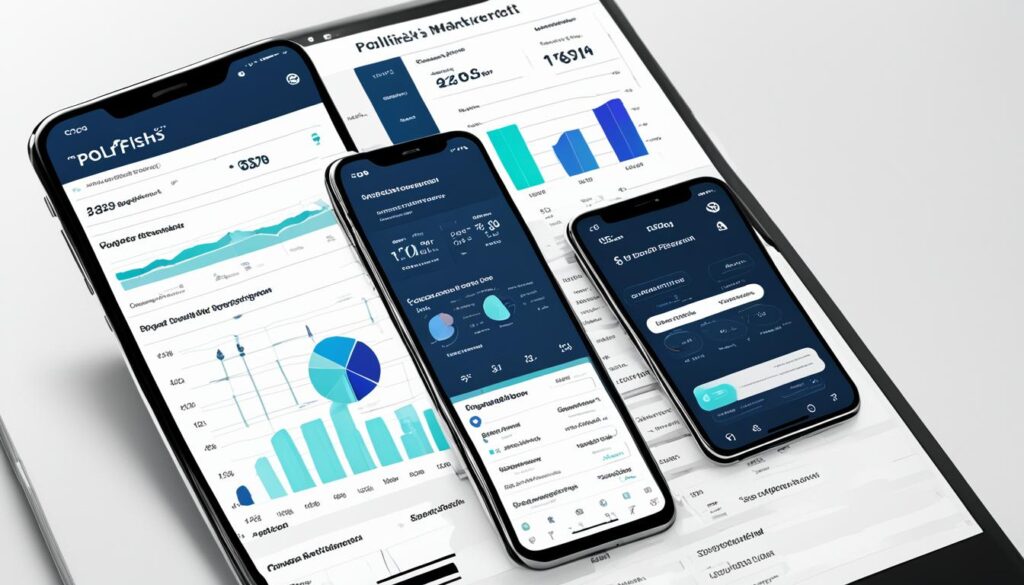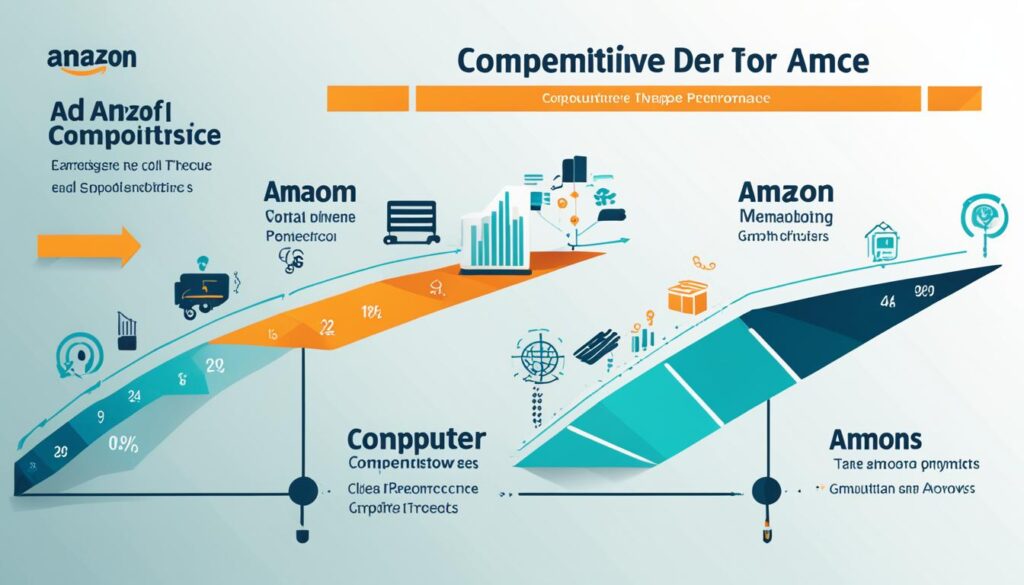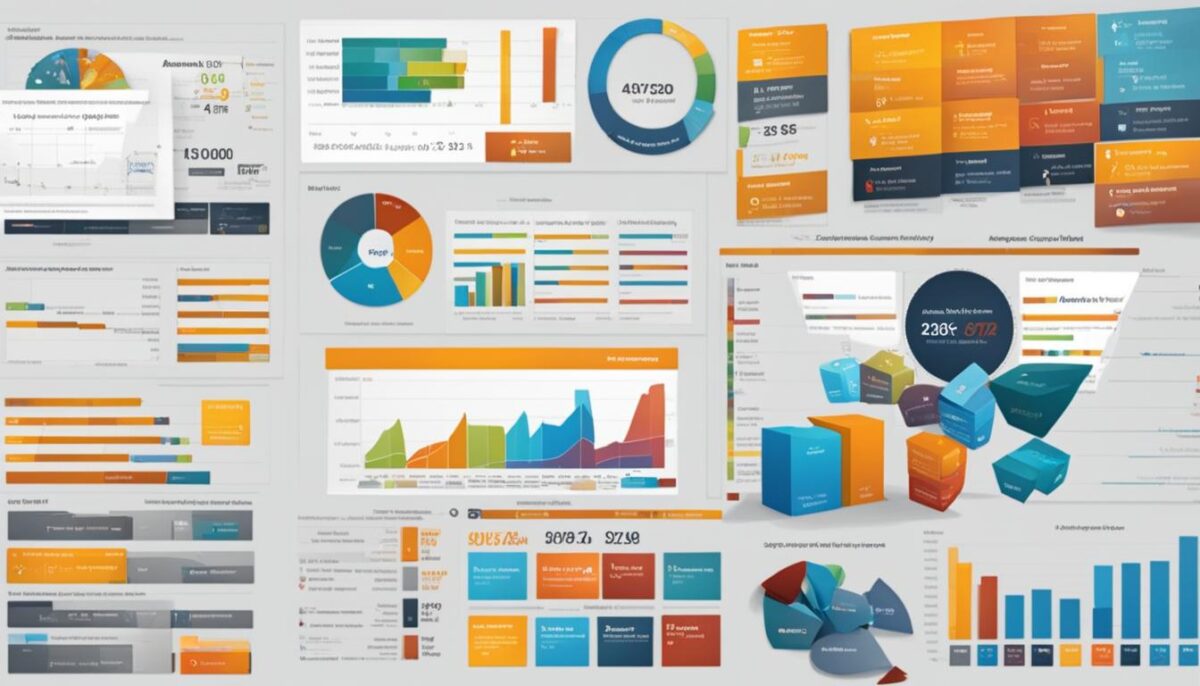Best Market Trend Analysis Software 2024
Market trend analysis software is crucial for businesses to stay ahead of the competition and make data-driven decisions. By leveraging the power of trend analysis tools, companies can gain valuable insights into market trends, customer preferences, and industry dynamics. From financial analysis software to business intelligence solutions, there are various market analysis software options available that cater to different business needs.
These software tools empower organizations to unlock the potential of their data, enabling them to identify lucrative opportunities, optimize strategies, and mitigate risks. With the help of data analytics software and market research software, businesses can effectively analyze market trends, identify consumer behavior patterns, and make informed business decisions. Whether it’s stock market analysis software for investors or predictive analytics software for businesses, the right software can provide the competitive advantage needed in today’s dynamic market landscape.
Key Takeaways:
- Market trend analysis software is essential for staying competitive and making data-driven decisions.
- There are various options available, including financial analysis software, business intelligence tools, and market research software.
- Data analytics software provides insights into market trends and consumer behavior.
- Stock market analysis software helps investors make informed investment decisions.
- Predictive analytics software empowers businesses with the ability to forecast market changes.
Attest – Data-Driven Market Research Platform
When it comes to market research and consumer insights, Attest is a top-notch platform that stands apart from the competition. With its designated research support and robust analytics capabilities, Attest empowers businesses to make data-driven decisions with confidence.
Attest offers a wide range of features designed to provide valuable insights and drive business success. One of its key strengths is consumer profiling, allowing businesses to gain a deep understanding of their target audience. By uncovering consumer preferences, behaviors, and motivations, businesses can tailor their products and marketing strategies for optimal results.
Brand tracking is another essential feature offered by Attest. It enables businesses to monitor the performance and perception of their brand in real-time. With this valuable information, companies can identify areas for improvement, make informed marketing decisions, and ensure that their brand remains competitive in the market.
Market analysis is made easy with Attest’s powerful tools and intuitive interface. By leveraging predictive analytics and gathering data on market trends, businesses can stay ahead of the curve and anticipate changes in consumer behavior. This allows for more strategic planning and an increased likelihood of success.
For businesses seeking creative validation, Attest offers comprehensive testing capabilities. Companies can test their advertisements, marketing campaigns, and product concepts to gather valuable feedback from consumers. This helps refine and optimize creative strategies, ensuring that businesses deliver the most impactful messages to their target audience.
In addition to its impressive features, Attest also offers flexible pricing options to cater to businesses of all sizes and budgets. Whether you’re a small startup or a large enterprise, Attest has a plan that suits your needs.
But don’t just take our word for it. Attest has received rave reviews from users, who praise its user-friendly interface, reliable data, and exceptional customer support.
“Attest has been a game-changer for our business. The insights we’ve gained have helped us refine our marketing campaigns, improve our products, and ultimately drive growth. The support team is also excellent!” – Jane Davis
With Attest as your market research partner, you can unlock the full potential of consumer insights and pave the way for data-driven success in your business.
Attest Pricing Options
| Plan | Price | Features |
|---|---|---|
| Basic | $99/month | Consumer Profiling Brand Tracking Market Analysis |
| Pro | $299/month | Basic features + Creative Testing Dedicated Support |
| Enterprise | Custom | Pro features + Advanced Analytics Customized Solutions |
Choose the plan that best suits your business needs and start harnessing the power of Attest’s market research platform today.
Google Trends – Search Term Analysis Tool
When it comes to market research, understanding search term popularity and user behavior is crucial for businesses to stay ahead of the competition. That’s where Google Trends comes in. As a free market research tool, Google Trends provides valuable insights into search term popularity, related queries, and geographic data.
One of the key advantages of Google Trends is its versatility. It is widely used for SEO purposes, helping businesses identify popular search terms and optimize their online presence accordingly. By tracking search trends, businesses can create content that resonates with their target audience and drives organic traffic to their websites.
Moreover, Google Trends is an invaluable tool for content creation. By identifying emerging topics and trending keywords, businesses can develop relevant and engaging content that captures the attention of their audience. This ensures that businesses are always on top of the latest trends and can deliver timely and valuable information to their customers.
But Google Trends is not just limited to SEO and content creation – it also provides insights for market research. By analyzing search trends in specific industries or locations, businesses can gain a deeper understanding of their market and identify potential opportunities. This information can be used to inform marketing strategies, product development decisions, and overall business planning.
Let’s take a closer look at some key features of Google Trends:
- Search Term Popularity: Google Trends shows the popularity of different search terms over time, allowing businesses to gauge user interest and adapt their strategies accordingly.
- Related Queries: By exploring related queries, businesses can uncover additional keywords and topics related to their industry, enabling them to expand their content and reach a broader audience.
- Geographic Data: Google Trends provides insights into search trends based on different locations, helping businesses understand regional preferences and tailor their marketing efforts accordingly.
With its user-friendly interface and powerful capabilities, Google Trends is a must-have tool for businesses looking to harness the power of data-driven market research, SEO, and content creation.
Take a look at the image below to see how Google Trends can provide valuable insights into search term popularity:
| Keyword | Search Volume | Related Queries |
|---|---|---|
| Market trend analysis | High | market trend analysis software, market research, trend analysis tools |
| Search term popularity | Medium | search volume, popular search terms, trending keywords |
| Geographic data | Low | regional preferences, location-based search trends |
| SEO | High | search engine optimization, organic search traffic, keyword research |
| Content creation | Medium | content marketing, blog writing, creative storytelling |
Latana – Brand Tracking and Audience Insights
When it comes to market research, having accurate and up-to-date data on your brand performance, audience insights, and competitor analysis is crucial. That’s where Latana comes in. This powerful market research tool provides comprehensive brand tracking and audience insights to help businesses make informed decisions and stay ahead of the competition.
The Power of Brand Tracking
Latana offers robust brand tracking capabilities that allow you to monitor your brand’s performance over time. With detailed metrics and analytics, you can gain valuable insights into brand awareness, perception, sentiment, and more. By tracking changes in these key metrics, you can identify areas for improvement and make data-driven decisions to strengthen your brand’s position in the market.
“With Latana, I was able to track the impact of our marketing campaigns on brand perception and make strategic adjustments to drive better results.” – John Smith, Marketing Manager at XYZ Company
Uncover Audience Insights
Understanding your target audience is essential for effective marketing and business strategies. Latana provides in-depth audience insights, allowing you to segment your audience based on various criteria such as demographics, interests, and behaviors. This information helps you tailor your messaging, targeting, and product offerings to better resonate with your target audience and drive customer engagement.
Stay Ahead with Competitor Analysis
In today’s competitive landscape, being aware of your competitors’ strategies and performance is crucial. Latana enables you to conduct thorough competitor analysis, providing you with insights into their brand positioning, messaging, and audience engagement. By benchmarking your brand against your competitors, you can identify opportunities, address gaps in the market, and refine your own strategies to gain a competitive edge.
Mobile Surveys for Quick Insights
“Latana’s mobile survey capabilities have been game-changing for our market research. With a reach of over 6 billion smartphone users, we can quickly gather valuable insights and make data-driven decisions faster.” – Sarah Johnson, Market Research Analyst at ABC Company
Latana specializes in mobile surveys, allowing you to reach a vast audience and collect valuable data efficiently. Whether you need to conduct quick surveys to gauge customer satisfaction, measure brand awareness, or gather feedback on specific marketing initiatives, Latana’s mobile survey capabilities have you covered.
The Benefits of Latana
Latana offers a range of benefits for businesses looking to elevate their market research efforts:
- Accurate brand tracking and audience insights
- Comprehensive competitor analysis
- Mobile surveys for quick and efficient data collection
- Real-time data visualization for actionable insights
- User-friendly interface for ease of use
- Flexible pricing options to suit different business needs
| Feature | Description |
|---|---|
| Brand Tracking | Monitor brand performance over time |
| Audience Insights | Segment and understand your target audience |
| Competitor Analysis | Gain insights into your competitors’ strategies |
| Mobile Surveys | Reach a vast audience for quick insights |
| Data Visualization | Visualize data in real-time for actionable insights |
| User-Friendly Interface | Easy to navigate and use the platform |
| Flexible Pricing | Choose a pricing plan that suits your business needs |
Whether you’re a small startup or a global enterprise, Latana’s brand tracking and audience insights capabilities enable you to make data-driven decisions and stay ahead of the competition in today’s dynamic market.
Pollfish – Customizable Market Research Surveys
In today’s competitive business landscape, understanding consumer preferences and opinions is crucial for success. That’s where Pollfish comes in, offering customizable market research surveys that provide valuable insights for product development and market research purposes.
One of the key features of Pollfish is its ability to conduct NPS surveys, allowing businesses to measure customer loyalty and satisfaction. With NPS, you can gauge the likelihood of customers recommending your products or services to others, helping you identify areas for improvement and growth.
Concept testing is another powerful tool offered by Pollfish. By collecting feedback on new ideas and concepts, you can evaluate their potential success in the market before investing significant resources. This helps you minimize risks and make more informed decisions, ultimately driving the success of your business.
Pollfish also provides custom targeting options, allowing you to reach your desired audience for maximum insights. Whether you are targeting a specific demographic, geographic location, or psychographic segment, Pollfish ensures that your surveys reach the right people, enhancing the accuracy and relevance of your research.
With Pollfish, you have the opportunity to gather consumer insights that go beyond mere data. By understanding the motivations, preferences, and behaviors of your target audience, you can make data-driven decisions that resonate with your customers and drive business growth.
Why Choose Pollfish for Market Research?
- Customizable surveys catered to your specific research needs
- NPS surveys to measure customer loyalty and satisfaction
- Concept testing to evaluate the viability of new ideas
- Custom targeting options for precise audience segmentation
- Valuable consumer insights that drive data-driven decisions
Empower your business with Pollfish and unlock the full potential of market research. With its customizable surveys, NPS capabilities, concept testing, and custom targeting options, Pollfish provides the tools and insights you need to stay ahead of the competition and understand your customers better.
“Pollfish has revolutionized the way we conduct market research. The ability to customize surveys and target specific audiences has allowed us to gain invaluable insights that drive our decision-making process.” – Jane Smith, Marketing Director at ABC Company

Mention – Social Media Monitoring and Brand Tracking
Mention is a comprehensive tool that offers social media monitoring, brand tracking, and reputation management features. With Mention, businesses can track conversations and mentions of their brand on social media and the web, allowing them to stay informed about what people are saying and stay ahead of any potential issues or crises.
One of the key benefits of using Mention is its ability to help businesses manage their social media presence effectively. By monitoring mentions of their brand across various social media platforms, businesses can gain valuable insights into how their brand is perceived and make informed decisions to shape their social media strategy.
Key Features of Mention:
- Social Media Monitoring: Mention allows businesses to monitor conversations and mentions of their brand on social media platforms, including Twitter, Facebook, Instagram, and more. This feature enables businesses to keep a close eye on what people are saying about their brand in real-time.
- Brand Tracking: With Mention, businesses can track and analyze the performance of their brand across different channels. This feature provides valuable insights into brand sentiment, reach, and engagement, helping businesses understand how their brand is perceived by their target audience.
- Reputation Management: Mention’s reputation management feature enables businesses to actively manage their online reputation. By monitoring mentions and conversations related to their brand, businesses can quickly identify and address any negative feedback or comments, allowing them to proactively manage their brand’s reputation.
- Social Media Management: Mention also offers social media management capabilities, allowing businesses to schedule and publish content across multiple social media platforms. This feature streamlines the social media management process and ensures consistent communication with the target audience.
Mention is widely used by businesses of all sizes to gain valuable insights into their brand’s online presence, monitor industry trends, and engage with their audience effectively. Its user-friendly interface and comprehensive features make it an ideal tool for social media management and brand tracking.
Mention is an excellent tool for social media monitoring and brand tracking. It provides businesses with the necessary data and insights to make informed decisions and build a strong online presence. Its reputation management features allow businesses to proactively manage their brand’s reputation, ensuring they stay ahead of any potential issues. Overall, Mention is a valuable asset for businesses looking to enhance their social media management and brand tracking efforts.
| Benefits | Features | Pricing |
|---|---|---|
| 1. Social media monitoring | 1. Monitor brand mentions on social media platforms | Free trial available Subscription-based pricing |
| 2. Brand tracking | 2. Analyze brand sentiment and engagement | Flexible pricing options Customizable plans |
| 3. Reputation management | 3. Identify and address negative feedback | Enterprise pricing available Contact sales for more information |
| 4. Social media management | 4. Schedule and publish content on multiple platforms |
Remesh – AI-Powered Market Research and Insights
Remesh is revolutionizing the market research industry with its AI-powered analysis and real-time insights. Through its innovative platform, businesses can leverage live focus groups to gather qualitative data at scale. With Remesh, market research becomes more accessible, efficient, and impactful.
The power of Remesh lies in its ability to facilitate chat-based conversations with a large number of participants simultaneously. These conversations are guided by an AI moderator that ensures a smooth and engaging experience. Participants can express their thoughts, opinions, and insights in real-time, providing businesses with valuable consumer input.
Remesh’s AI algorithms analyze the collected data, generating actionable insights for market research, product development, and consumer insights. With AI-powered analysis, businesses can quickly identify trends, patterns, and sentiments from the conversations. This allows for data-driven decision-making and a deeper understanding of consumer preferences and behaviors.
One of the key advantages of Remesh is its ability to provide real-time insights. Traditional market research methods often take time to collect, analyze, and interpret data. With Remesh, businesses can have instant access to feedback and opinions, allowing for agile decision-making and quicker response to market changes.
Why Choose Remesh for Market Research?
- Live focus groups conducted at scale
- Real-time insights for agile decision-making
- AI-powered analysis for deeper understanding
- Efficient and cost-effective market research solution
- Offers valuable consumer insights for product development
By utilizing Remesh, businesses can unlock the power of AI-driven market research and gain a competitive edge. With live focus groups and real-time insights, Remesh empowers businesses to make data-driven decisions and stay ahead in today’s dynamic market landscape.
Heartbeat AI – Automated Market Research and Data Analysis
Heartbeat AI is an innovative solution that revolutionizes market research and data analysis. By automating the process of survey design and data collection, Heartbeat AI enables businesses to gather consumer insights efficiently and make data-driven decisions.
The platform offers a user-friendly interface for creating customized surveys tailored to the specific needs of businesses. With Heartbeat AI, survey design becomes hassle-free, allowing companies to focus on extracting meaningful information from the collected data.
Once the surveys are deployed, Heartbeat AI utilizes advanced algorithms to analyze the responses and generate valuable consumer insights. The powerful data analysis capabilities of the platform provide businesses with a clear understanding of customer preferences, market trends, and emerging opportunities.
The intuitive nature of Heartbeat AI’s data analysis tools enables businesses to uncover hidden patterns and identify key trends, helping them stay ahead of the competition. The platform offers visualization options that make it easy to interpret complex data sets, empowering businesses to extract actionable insights and make informed decisions.
Heartbeat AI also provides real-time reporting and analytics, allowing businesses to stay updated with the latest market information. The platform’s robust analytics capabilities help identify customer behavior patterns, preferences, and sentiments, leading to improved marketing strategies and targeted campaigns.
This automated market research and data analysis tool offers businesses a competitive advantage by streamlining the market research process and unlocking valuable consumer insights. With Heartbeat AI, companies can elevate their decision-making process and drive growth based on accurate data and a deep understanding of their target audience.
Conclusion
Market trend analysis software is an essential tool for businesses looking to gain a competitive edge in today’s dynamic market. By utilizing top software options such as Attest, Google Trends, Latana, Pollfish, Mention, Remesh, and Heartbeat AI, businesses can make data-driven decisions and harness the power of predictive analytics.
These software options provide valuable insights into market trends, consumer behavior, and competitor analysis, allowing businesses to make informed decisions and stay ahead of the curve. With features such as designated research support, search term analysis, brand tracking, customizable surveys, social media monitoring, live focus groups, automated market research, and data analysis, these tools offer comprehensive solutions for market research and analysis.
By leveraging market trend analysis software, businesses can identify emerging trends, optimize their marketing strategies, and drive their success in 2024 and beyond. With data-driven insights at their disposal, businesses can make informed decisions, adapt to changing market conditions, and stay ahead of their competitors. So, don’t miss out on these powerful software options and start making data-driven decisions today!
Learn More About Amazon Product Research
FAQ
What is market trend analysis software?
Market trend analysis software is a tool that helps businesses analyze and identify patterns, trends, and changes in the market. It utilizes data analytics and business intelligence techniques to provide insights into market conditions, customer behavior, and competitive landscape.
Why is market trend analysis software important?
Market trend analysis software is important because it enables businesses to make data-driven decisions, stay ahead of the competition, and identify growth opportunities. By analyzing market trends, businesses can adjust their strategies, launch new products, and optimize their operations.
What are some key features of market trend analysis software?
Market trend analysis software often includes features such as data visualization, predictive analytics, consumer profiling, brand tracking, competitor analysis, market segmentation, and market forecasting. These features help businesses gain insights into consumer behavior, market dynamics, and emerging trends.
How can businesses use market trend analysis software?
Businesses can use market trend analysis software to track market trends, analyze customer preferences, identify new market opportunities, evaluate competitors, optimize pricing strategies, and make informed business decisions. It provides valuable insights for product development, marketing campaigns, and overall business strategies.
How does Attest help businesses with market research?
Attest is a market research platform that offers designated research support and high-quality consumer insights. It helps businesses launch new products, engage with the audience, and make informed decisions. Attest provides features such as consumer profiling, brand tracking, market analysis, and creative testing.
What can Google Trends be used for?
Google Trends is a free market research tool that provides insights into search term popularity, related queries, and geographic data. It is widely used for SEO purposes, content creation, and market research. By analyzing search trends, businesses can identify emerging topics, understand user behavior, and optimize their online presence.
What are the features of Latana?
Latana is a market research tool that offers brand tracking, audience insights, and competitor analysis. It provides data on brand performance, audience segmentation, and industry benchmarking. Latana specializes in mobile surveys and has a reach of over 6 billion smartphone users. It is suitable for quick surveys and brand tracking purposes.
How can Pollfish help businesses with market research?
Pollfish is a market research tool that offers customizable surveys, including NPS surveys and concept testing. It provides custom targeting options and allows businesses to collect consumer insights for product development and market research. Pollfish offers custom pricing based on usage and is suitable for short and sweet surveys.
What are the features of Mention?
Mention is a comprehensive tool for social media monitoring, brand tracking, and reputation management. It allows businesses to track conversations and mentions of their brand on social media and the web. With Mention, businesses can manage their social media presence, develop effective brand strategies, and handle crisis management situations.
How does Remesh facilitate market research?
Remesh is an AI-powered market research tool that offers live focus groups, real-time insights, and data analysis. It allows businesses to collect qualitative data at scale through chat-based conversations. Remesh is suitable for market research, consumer insights, and product development purposes. It provides valuable insights through its AI-driven analysis.
What does Heartbeat AI offer for market research and data analysis?
Heartbeat AI is an automated market research tool that facilitates survey design and data analysis. It helps businesses collect consumer insights and make data-driven decisions. Heartbeat AI offers an intuitive platform for survey creation and analysis, making it easy for businesses to gather valuable market data.
How does market trend analysis software benefit businesses?
Market trend analysis software plays a crucial role in helping businesses stay ahead of the competition, make informed decisions, and predict market changes. The software options mentioned in this article provide valuable insights and features for market research, audience analysis, and data analysis. By utilizing these tools, businesses can gain a competitive edge and drive their success in 2023 and beyond.



















